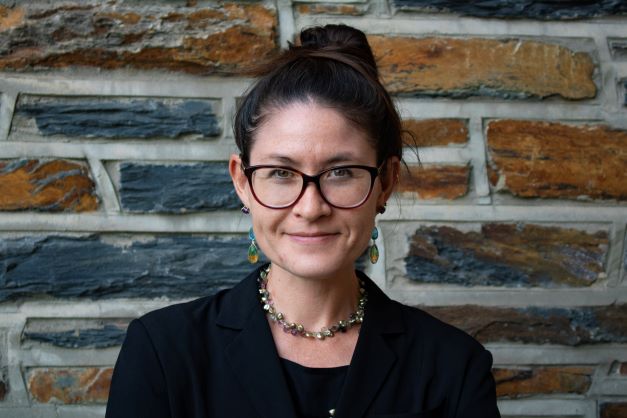A key challenge when conducting cost analysis as part of an efficacy study is producing information that can be useful for addressing questions related to replicability or scale. When the study is a follow up conducted many years after the implementation, the need to collect data retrospectively introduces additional complexities. As part of a recent follow-up efficacy study, Maya Escueta and Tyler Watts of Teachers College, Columbia University worked with the IES-funded Cost Analysis in Practice (CAP) project team to plan a cost analysis that would meet these challenges. This guest blog describes their process and lessons learned and provides resources for other researchers.
 What was the intervention for which you estimated costs retrospectively?
What was the intervention for which you estimated costs retrospectively?
We estimated the costs of a pre-kindergarten intervention, the Chicago School Readiness Project (CSRP), which was implemented in nine Head Start Centers in Chicago, Illinois for two cohorts of students in 2004-5 and 2005-6. CSRP was an early childhood intervention that targeted child self-regulation by attempting to overhaul teacher approaches to behavioral management. The intervention placed licensed mental health clinicians in classrooms, and these clinicians worked closely with teachers to reduce stress and improve the classroom climate. CSRP showed signs of initial efficacy on measures of preschool behavioral and cognitive outcomes, but more recent results from the follow-up study showed mainly null effects for the participants in late adolescence.
The IES research centers require a cost study for efficacy projects, so we faced the distinct challenge of conducting a cost analysis for an intervention nearly 20 years after it was implemented. Our goal was to render the cost estimates useful for education decision-makers today to help them consider whether to replicate or scale such an intervention in their own context.
 What did you learn during this process?
What did you learn during this process?
When enumerating costs and considering how to implement an intervention in another context or at scale, we learned four distinct lessons.
1. Consider how best to scope the analysis to render the findings both credible and relevant given data limitations.
In our case, because we were conducting the analysis 20 years after the intervention was originally implemented, the limited availability of reliable data—a common challenge in retrospective cost analysis—posed two challenges. We had to consider the data we could reasonably obtain and what that would mean for the type of analysis we could credibly conduct. First, because no comprehensive cost analysis was conducted at the time of the intervention’s original implementation (to our knowledge), we could not accurately collect costs on the counterfactual condition. Second, we also lacked reliable measures of key outcomes over time, such as grade retention or special education placement that would be required for calculating a complete cost-benefit analysis. This meant we were limited in both the costs and the effects we could reliably estimate. Due to these data limitations, we could only credibly conduct a cost analysis, rather than a cost-effectiveness analysis or cost-benefit analysis, which generally produce more useful evidence to aid in decisions about replication or scale.
Because of this limitation, and to provide useful information for decision-makers who are considering implementing similar interventions in their current contexts, we decided to develop a likely present-day implementation scenario informed by the historical information we collected from the original implementation. We’ll expand on how we did this and the decisions we made in the following lessons.
2. Consider how to choose prices to improve comparability and to account for availability of ingredients at scale.
We used national average prices for all ingredients in this cost analysis to make the results more comparable to other cost analyses of similar interventions that also use national average prices. This involved some careful thought about how to price ingredients that were unique to the time or context of the original implementation, specific to the intervention, or in low supply. For example, when identifying prices for personnel, we either used current prices (national average salaries plus fringe benefits) for personnel with equivalent professional experience, or we inflation-adjusted the original consulting fees charged by personnel in highly specialized roles. This approach assumes that personnel who are qualified to serve in specialized roles are available on a wider scale, which may not always be the case.
In the original implementation of CSRP, spaces were rented for teacher behavior management workshops, stress reduction workshops, and initial training of the mental health clinicians. For our cost analysis, we assumed that using available school facilities were more likely and tenable when implementing CSRP at large scale. Instead of using rental prices, we valued the physical space needed to implement CSRP by using amortized construction costs of school facilities (for example, cafeteria/gym/classroom). We obtained these from the CAP Project’s Cost of Facilities Calculator.
3. Consider how to account for ingredients that may not be possible to scale.
Some resources are simply not available in similar quality at large scale. For example, the Principal Investigator (PI) for the original evaluation oversaw the implementation of the intervention, was highly invested in the fidelity of implementation, was willing to dedicate significant time, and created a culture that was supportive of the pre-K instructors to encourage buy-in for the intervention. In such cases, it is worth considering what her equivalent role would be in a non-research setting and how scalable this scenario would be. A potential proxy for the PI in this case may be a school principal or leader, but how much time could this person reasonably dedicate, and how similar would their skillset be?
4. Consider how implementation might work in institutional contexts required for scale.
Institutional settings might necessarily change when taking an intervention to scale. In larger-scale settings, there may be other ways of implementing the intervention that might change the quantities of personnel and other resources required. For example, a pre-K intervention such as CSRP at larger scale may need to be implemented in various types of pre-K sites, such as public schools or community-based centers in addition to Head Start centers. In such cases, the student/teacher ratio may vary across different institutional contexts, which has implications for the per-student cost. If delivered in a manner where the student/ teacher ratio is higher than in the original implementation, the intervention may be less costly, but may also be less impactful. This highlights the importance of the institutional setting in which implementation is occurring, and how this might affect the use and costs of resources.
How can other researchers get assistance in conducting a cost analysis?
In conducting this analysis, we found the following CAP Project tools to be especially helpful (found on the CAP Resources page and the CAP Project homepage):
- The Cost of Facilities Calculator: A tool that helps estimate the cost of physical spaces (facilities).
- Cost Analysis Templates: Semi-automated Excel templates that support cost analysis calculations.
- CAP Project Help Desk: Real-time guidance from a member of the CAP Project team. You will receive help in troubleshooting challenging issues with experts who can share specific resources. Submit a help desk request by visiting this page.
Maya Escueta is a Postdoctoral Associate in the Center for Child and Family Policy at Duke University where she researches the effects of poverty alleviation policies and parenting interventions on the early childhood home environment.
Tyler Watts is an Assistant Professor in the Department of Human Development at Teachers College, Columbia University. His research focuses on the connections between early childhood education and long-term outcomes.
For questions about the CSRP project, please contact the NCER program officer, Corinne.Alfeld@ed.gov. For questions about the CAP project, contact Allen.Ruby@ed.gov.